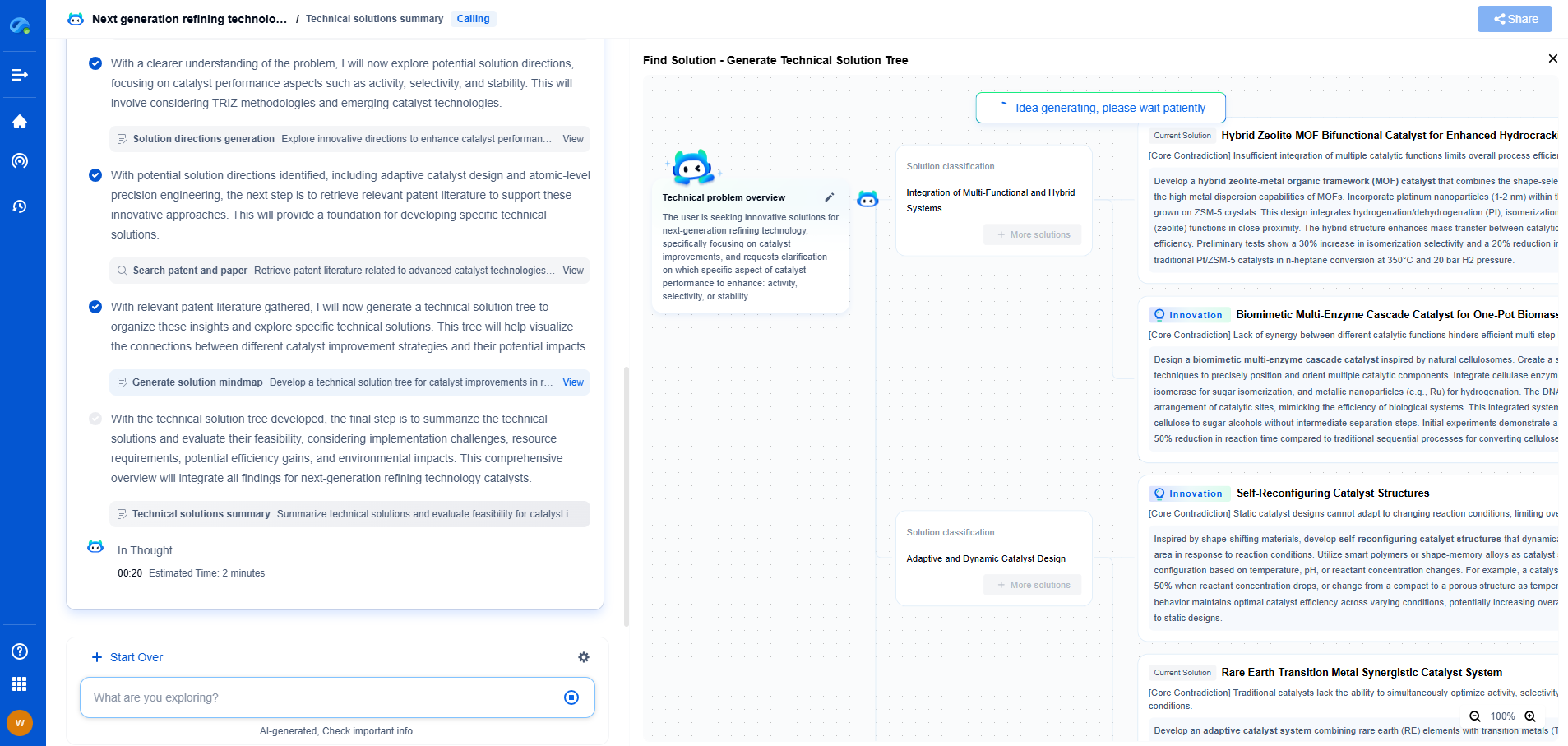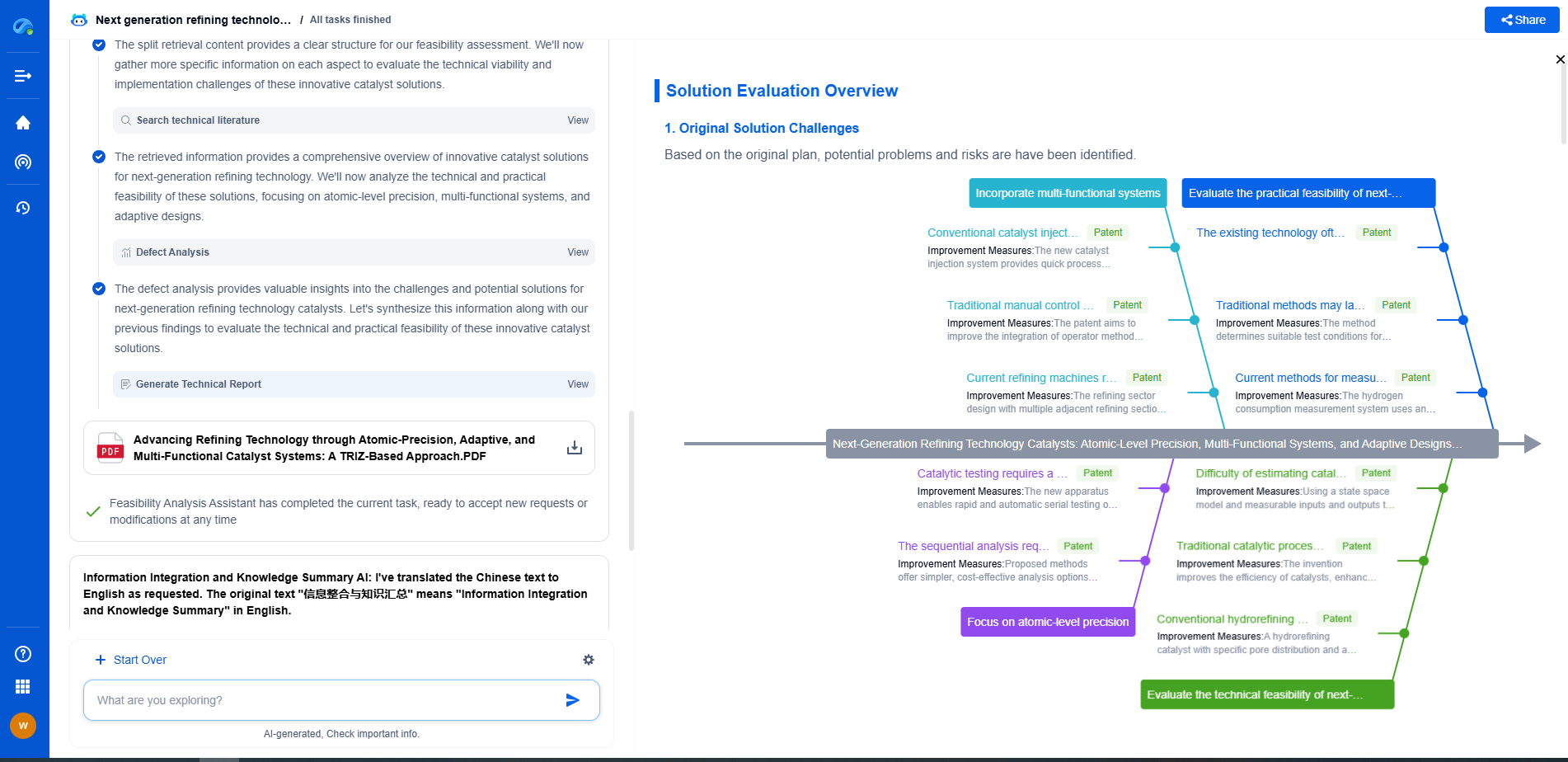Star vs. Daisy-Chain Topologies for Multi-Channel Sensor Arrays
JUL 17, 2025 |
In the world of multi-channel sensor arrays, selecting the right topology is crucial for ensuring efficient data communication and management. Two common architectures employed are star and daisy-chain topologies, each with its unique advantages and potential drawbacks. In this blog, we'll delve into the intricacies of both topologies to help you make an informed decision.
Star Topology: Centralized and Efficient
Star topology is a network configuration where each sensor is directly connected to a central hub or controller. This central node acts as a mediator, facilitating communication between various sensors and the data processing unit.
Advantages of Star Topology
1. Centralized Management: With a star topology, all communication passes through a central hub, simplifying the management and troubleshooting of the network.
2. Enhanced Reliability: If one sensor fails, it doesn't affect the rest of the network. This is because each sensor operates independently with its own dedicated connection to the central hub.
3. Simplified Data Processing: The central hub can be equipped with powerful processing capabilities, allowing for real-time analysis and decision-making.
Challenges of Star Topology
1. Increased Wiring: The need for each sensor to connect directly to the hub can lead to a significant increase in wiring, which might be cumbersome in larger setups.
2. Central Hub Dependency: The entire network's functionality hinges on the central hub. If the hub fails, the network is compromised.
Daisy-Chain Topology: Simplicity and Scalability
Daisy-chain topology connects sensors in a series, with each sensor linked to the next. This linear arrangement can simplify certain aspects of network design.
Advantages of Daisy-Chain Topology
1. Reduced Wiring: Daisy-chain topology requires less wiring compared to a star configuration, making it cost-effective and easier to implement in some scenarios.
2. Scalability: Adding new sensors to the network is straightforward, as you can simply extend the chain.
3. Simplicity: The linear nature of the daisy-chain design can simplify installation and reduce clutter, especially in environments with limited space.
Challenges of Daisy-Chain Topology
1. Propagation of Failure: If one sensor in the chain fails, it can disrupt communication for all subsequent sensors in the network.
2. Signal Degradation: As the chain grows longer, the potential for signal degradation increases, which can affect data accuracy and transmission speed.
3. Limited Flexibility: The linear nature may limit network configurations, making it less adaptable to complex setups.
Choosing the Right Topology
When deciding between star and daisy-chain topologies, consider the specific requirements and constraints of your sensor array system. Factors such as the number of sensors, available space, budget, and desired reliability should all play a role in your decision.
Star topology is often preferred in scenarios where reliability and centralized control are paramount, despite the increased wiring requirements. In contrast, daisy-chain topology is well-suited for applications where simplicity, cost reduction, and scalability are prioritized.
Conclusion
The choice between star and daisy-chain topologies is not one-size-fits-all; it requires careful consideration of the unique demands of your multi-channel sensor array. By understanding the strengths and limitations of each configuration, you can design a network that balances performance, reliability, and cost-effectiveness. Ultimately, the right topology will empower your sensor array to deliver accurate data and insights, driving informed decision-making in your applications.
Whether you’re developing multifunctional DAQ platforms, programmable calibration benches, or integrated sensor measurement suites, the ability to track emerging patents, understand competitor strategies, and uncover untapped technology spaces is critical.
Patsnap Eureka, our intelligent AI assistant built for R&D professionals in high-tech sectors, empowers you with real-time expert-level analysis, technology roadmap exploration, and strategic mapping of core patents—all within a seamless, user-friendly interface.
🧪 Let Eureka be your digital research assistant—streamlining your technical search across disciplines and giving you the clarity to lead confidently. Experience it today.
- R&D
- Intellectual Property
- Life Sciences
- Materials
- Tech Scout
- Unparalleled Data Quality
- Higher Quality Content
- 60% Fewer Hallucinations
Browse by: Latest US Patents, China's latest patents, Technical Efficacy Thesaurus, Application Domain, Technology Topic, Popular Technical Reports.
© 2025 PatSnap. All rights reserved.Legal|Privacy policy|Modern Slavery Act Transparency Statement|Sitemap|About US| Contact US: help@patsnap.com

